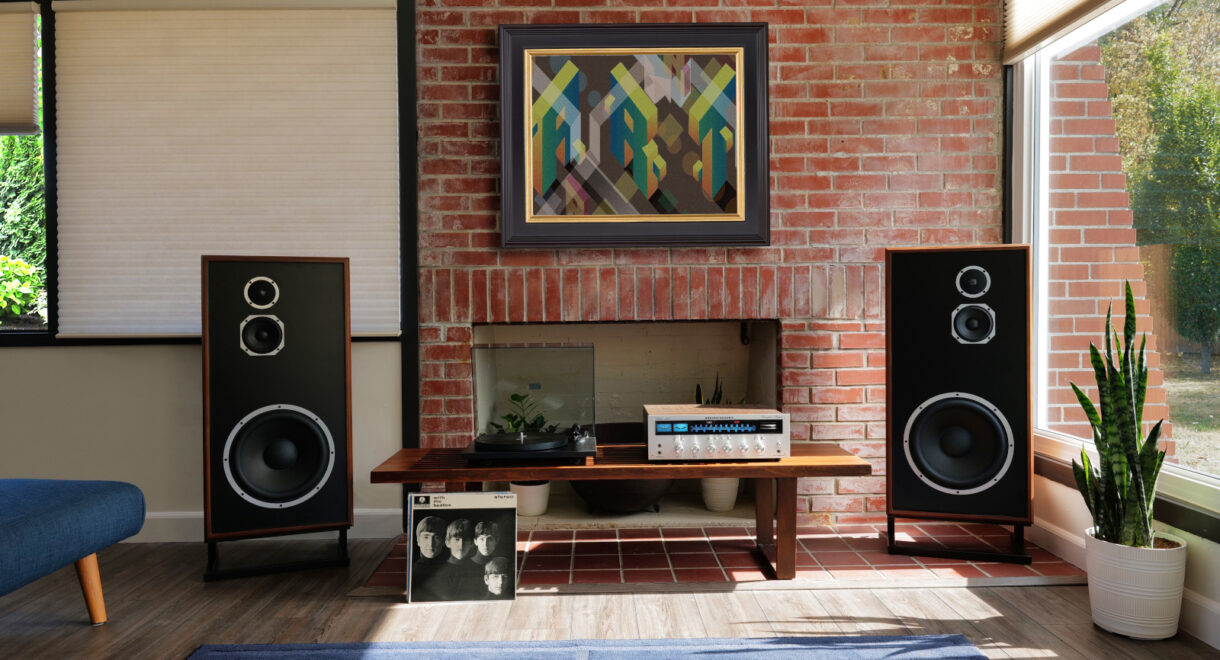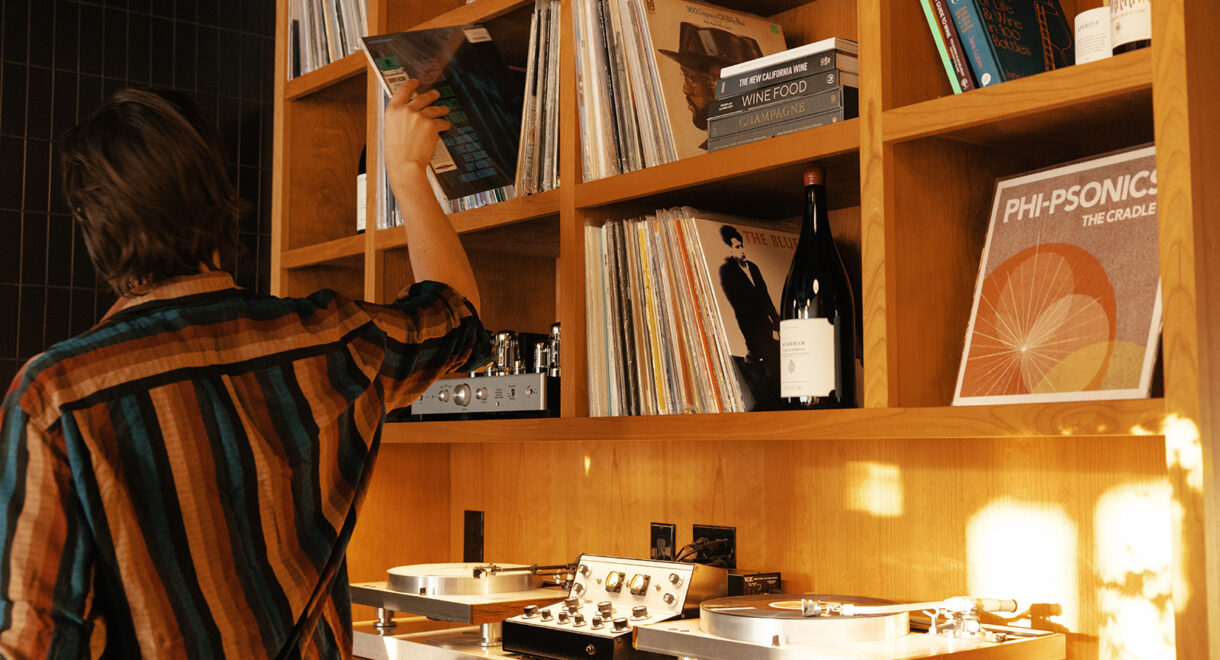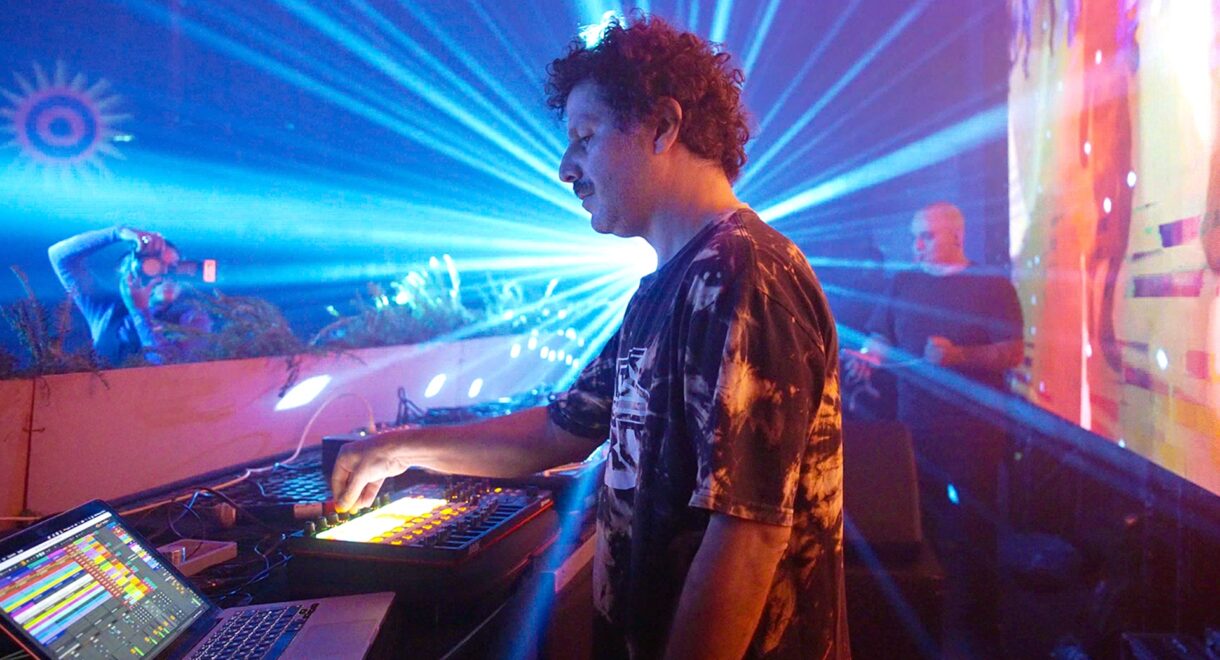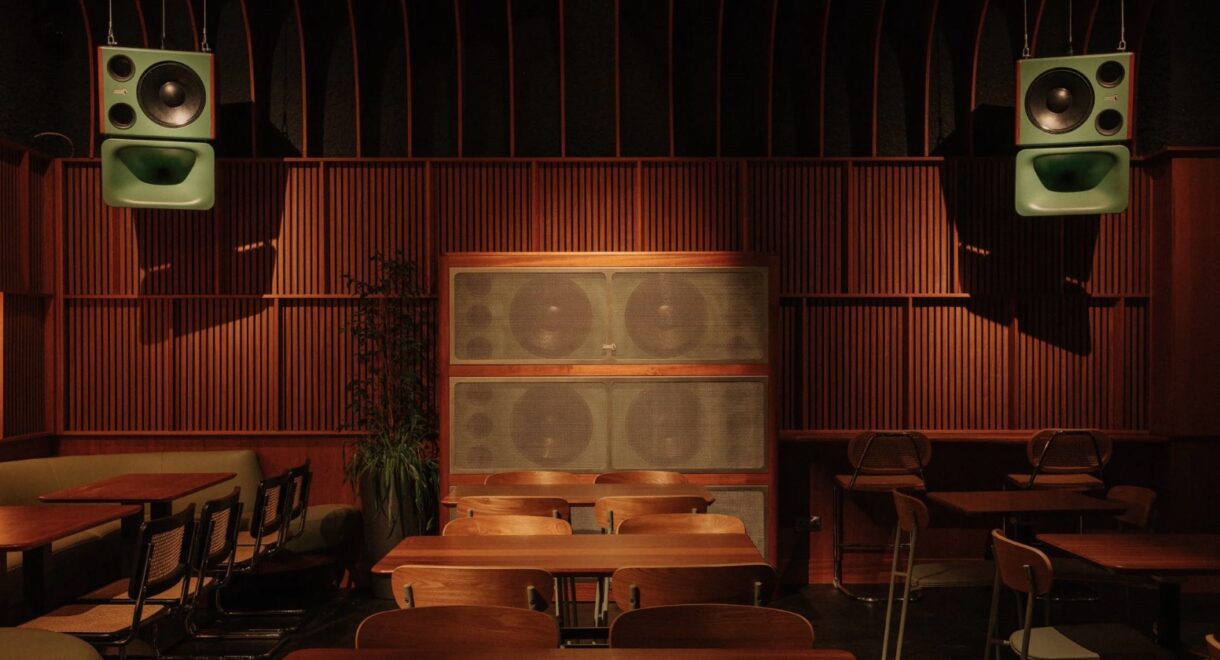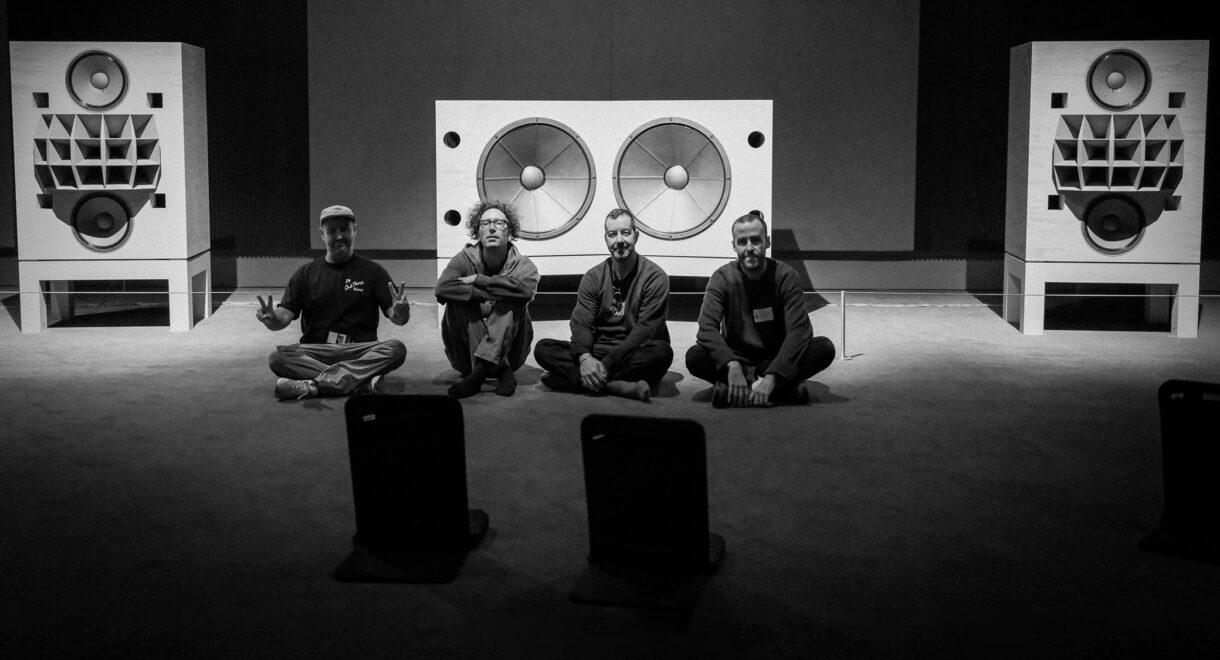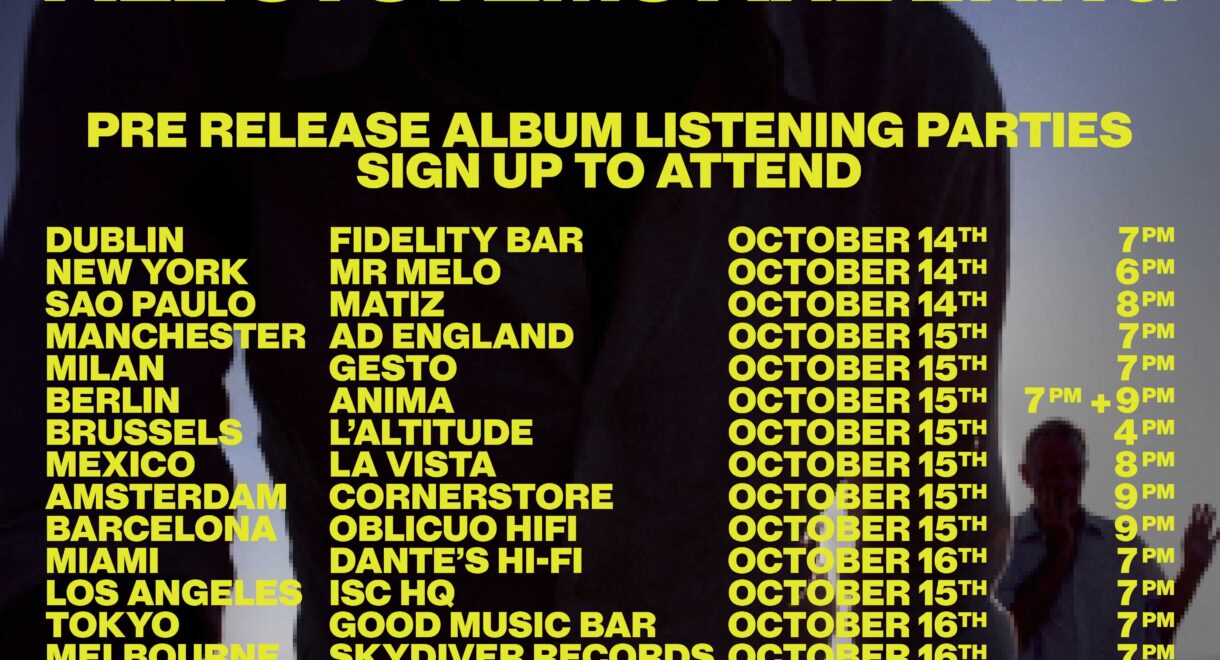November 20th, hear the new KLH Model Seven speakers at a curated listening session at The Wallis. As part of our ongoing focus on hi-fi equipment from the […]
Cometa’s M2: A rotary mixer and active listening platform built for DJ’s and audiophile rooms

In Conversation with the team behind Cometa’s M2, a rotary club mixer, home blending preamplifier, and high-fidelity active listening
platform.
Rotary mixers and audiophile equipment have been an integral part of DJ culture since its early beginnings in the ’70s. David Mancuso’s legendary Loft parties prominently featured Klipschorns and Mark Levinson amplifiers, while the system that powered New York discotheque Paradise Garage contained beautiful McIntosh and Crown amplifiers alongside rotary mixers by UREI and Bozak. The culture would change over the decades as more cost-effective options became available, but rotary mixers and hi-fi audio would retain a cult following with DJ’s who treasured a more tactile mixing experience and interaction with sound.
In recent years, the worlds of DJs and audiophiles have come increasingly closer. A new wave of listening rooms around the world have installed booths designed specifically with an emphasis on selection and hi-fi sound, often featuring rotary mixers as their centerpiece alongside audiophile amplification and speaker systems.
Based in Los Angeles, the team behind Cometa, an audio design house and sound lab, are looking to further bridge those two worlds. Following years of extensive research and development, Cometa has just launched the M2, an audiophile-grade rotary mixer and “active listening platform” built for those who shape sound with intention—from club selectors and audio engineers to high-fidelity obsessives. With designs by some of the best engineers in professional audio and fully Class-A discrete analog circuitry, the M2 aims to deliver uncompromising sonic purity to reveal the full depth, clarity, and emotional power of sound.
In Sheep’s Clothing’s Phil Cho spoke with the team behind Cometa to learn more about the inspiration behind the M2, its design philosophy and components, along with the early reactions from the DJ and hi-fi community.
Hey guys! Great to chat. We’ve been using the M2 for a while now, but actually don’t know the full origin story. Rotary mixers have been around since the beginning of DJ culture in the ‘70s. Can you talk about how your journey with rotary mixers began?
Spencer: It started with going to one of those Harvey Sarcastic Disco parties way back in 2005 or 2006. I had always heard about rotary mixers, and I never really knew what the difference was until I actually saw it in use. It was the first after-hours I ever went to, a legit warehouse party. I remember walking in, sweat dripping from the walls, and people going crazy. Then, at the center was Harvey, who was always a mythical figure to me. I saw him and Gerry Rooney ripping on a Bozak, or something equivalent to it. I remember heading home, going on Craigslist, and looking for the nearest rotary. I found an Allen & Heath Xone V6 down in Long Beach that was being used by Louis Vega while he was in town. I ended up buying one, and I fell in love with it. I began to understand the whole rotary thing, the action of spinning versus throwing the sliders.
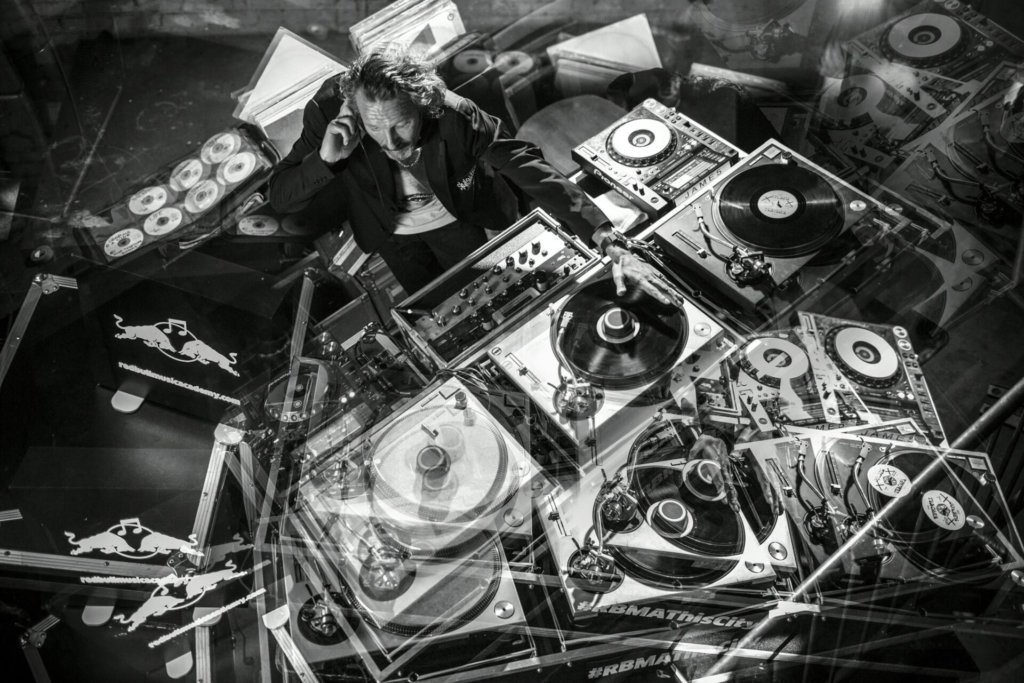
I used that mixer for a long time, and it stayed at my house. I’d bring it out every once in a while to parties. Then the French E&S came out, and I remember people freaking out about it because it was the first new rotary to come out in years. There was an 18-month waiting list, or something similar. Then, more and more boutique rotary companies were emerging.
I was asked to fund a new mixer venture, but it never really took off. Later, I got involved with some other people who wanted to help manage the project. After a year or two, I thought, “Well, whatever, I’m going to do it, and it has to bring a different spin than these other new rotaries that were rehashing old designs.” Then, slowly, the project turned into making a hi-fi mixer, something that would pair well with audiophile gear.
As a longtime DJ and hi-fi enthusiast yourself, what are your personal thoughts on the appeal of rotary mixers?
S: I love the way they feel. It feels like you’re really tuning the sound with these knobs, and after the mixer is on for a while, it gets even more buttery and soft. I always really liked DJ mixes where you can’t tell when one song is ending and the other is beginning. I felt like it was maybe a little easier for me to do that using a rotary because it’s got a more detailed, supple touch than a slider that can easily be banged around. Also, I love the aesthetic of a rack mount rotary and it being this really utility-driven thing. It’s like getting behind the wheel of a really nice, fast car. It has an entirely different feel than a slider mixer.
Besides the Allen & Heath Xone V6 were there any other rotary models that you fell in love with?
S: Early on, I had also used a Bozak, but it was a pretty beat-up one, and it didn’t really have the fine-tuning features that I wanted. I think it just had a high and a low EQ, but it wasn’t really even an EQ. I’ve also played on Rane and Urei rotary mixers. I really did want a Urei, but they were so hard to come by. When people got a hold of one, they kept it…
Loren: Later on, Spencer also started collecting many of the touchstone rotaries that are around. At the Cometa office, we now have Allen & Heath Xone V6 modular system, Rane MP2015, Buzzy Beck BB-6-3A, Bozak CMA-10-2DA, Union Audio Orbit.6 & Elara.4, Alpha Recording System 9900, among others. Part of the development of Cometa involved acquiring every single rotary we could get our hands on. We conducted a case study on all the key models that have emerged since the inception of rotary mixers.
Speaking on the development, how did you start building on the ideas that you had, and what were some of the key features you envisioned for the Cometa M2?
S: As far as doing the research and finding what it was that I wanted, that was the journey. At the start, the idea came from wanting a straightforward two-channel mixer with as few features as possible, and having a really clean circuit. I was never going to go the way of Pioneer and have a million buttons. With hi-fi systems, it’s best to have the simplest setup. You don’t want a whole lot of confusion in your signal chain. The focus has been to keep the signal path as robust and pure as possible without compromising reliability or performance. Technically speaking, we focused on high headroom & wide dynamic range, with an emphasis on audiophile-grade components and sound.
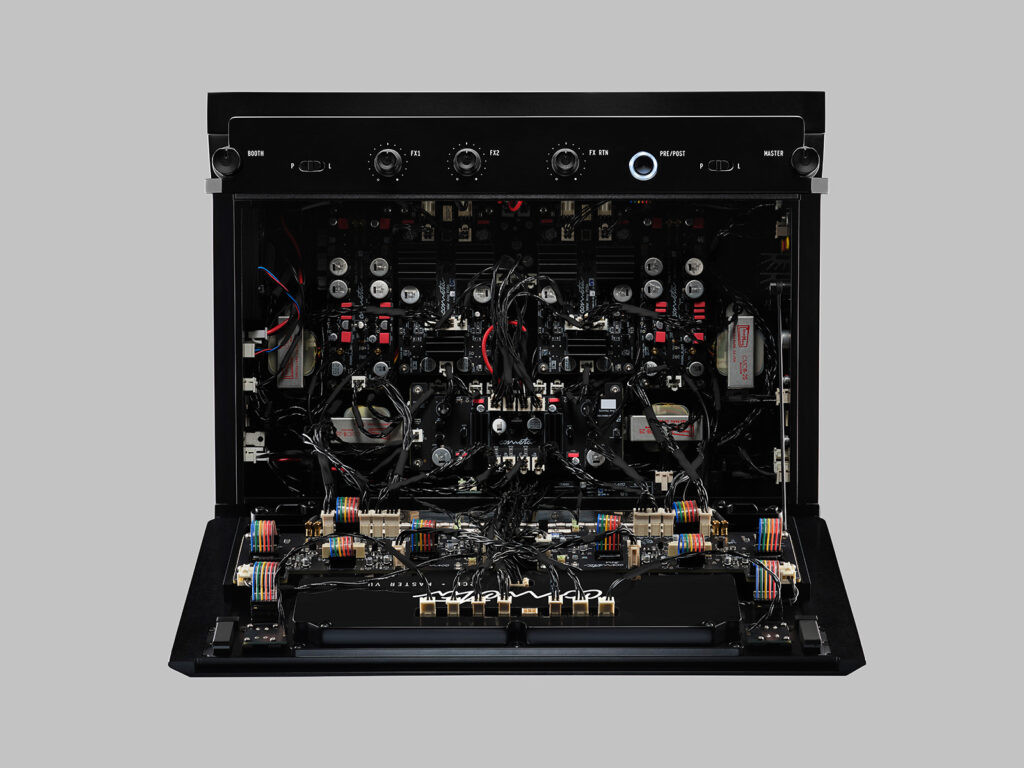
“Barry Bialos’ Op-amp was a novel design that focused on producing the absolute cleanest tone and gain. We then set out to utilize the highest quality components… something that could stand up to the Audio Note, Mark Levinson, McIntosh, etc. systems.”
You then brought on some of the best people to realize that vision. Can you talk about some of the people who are involved?
S: There’s Zane Reynolds, who’s been a friend of mine since high school. He goes by SFV Acid, and he’s an extremely talented musician, and also a gearhead. I started tapping him to come down to San Diego with me to work with my engineers down there. He’s been on interface and quality control, making sure that every feature is top-notch. He’s been involved for maybe the past two or three years. Loren has been involved for a bit longer than that, initially helping with branding.
L: Spencer is an old friend, and he’s close to my brother and I (A Club Called Rhonda). We were always hanging out and going to bars together. Our origin story with DJing and rotary mixers is very similar to Spencer’s, which was the Harvey stuff. I guess we’re all kind of acolytes of his in a way. I’ve been involved with the project since the David Meza days, and it’s undergone several iterations.
David Meza was initially involved with Barry Bialos, an audiophile and audio systems designer. When Bialos passed away, Meza moved on, and the project went into the hands of these medical device manufacturers in San Diego. These guys are developing equipment with people’s lives on the line, so they design circuits in a way that nobody does within like a millionth of a percentile of tolerance. They did a lot of the heavy lifting on the engineering side and added refinement to the circuitry.
The last person to bring this project to the finish line is our Grammy Award-winning engineer who runs a studio manufacturing company and has also made designs for Shadow Hills Industries.
S: There’s also Kenny Gilmore, another musician I went to high school with. He’s a great studio engineer who has been thoroughly testing all these units to ensure they meet the grade. Our other key team member, Dorian Nagy, serves as our manufacturing manager, ensuring we receive the best parts and that everything arrives in a timely and logistical manner. We also have Sam Cooper, who’s working on assembly and build. We have a close-knit team of people who have collectively known each other for a hundred years. It’s crazy. I don’t think we could have done this in any other situation.
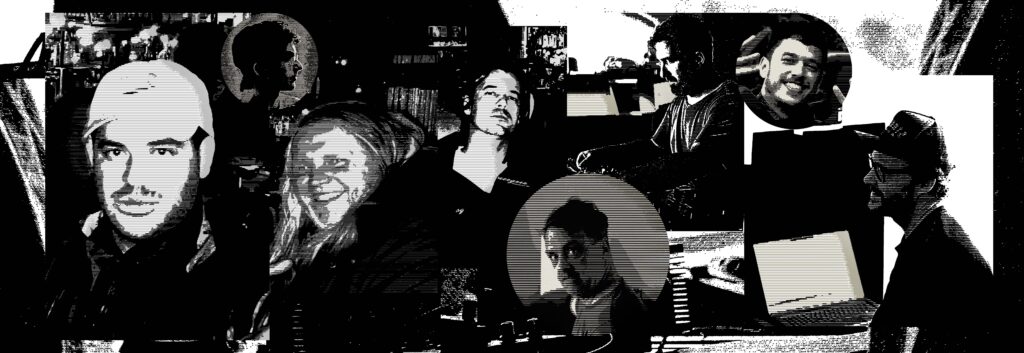
Kenny actually works on all the In Sheep’s Clothing label releases! He’s amazing and all those people you just named seem like the most trusted ears…
L: Kenny is a master and doing a really great job. Having all these different rotary mixers in-house allows us to conduct extensive testing. We have seven or eight different turntables and about 12-13 cartridges at the office. Both Kenny and Ian have intense analysis equipment, which is not only great for Cometa but also for audio in general. We’ve been analyzing the differences between cartridges, including which loading techniques work best. It really feels like an audio lab.
On that point of it being a lab, were there some key findings, components, or general approaches within this whole process that were breakthroughs in the development of the Cometa M2?
L: So the most significant innovation that Cometa rests on is our discrete Op-amp . From the beginning, we wanted to create a mixer with an audio signal path that is 100% analog. Barry Bialos’ Op-amp was a novel design that focused on producing the absolute cleanest tone and gain. We then set out to utilize the highest quality components and test multiple iterations of each. Like with the film capacitors and the Cinemag transformers that we use. Additionally, the circuit layout and board topology have been rigorously tested, optimized, and revised via real-world data from analysis of home, club, and listening bar environments. One of the biggest things we found is that on the highest quality audiophile systems, traditional rotary designs just fall apart. So we wanted something that could stand up to the Audio Note, Mark Levinson, McIntosh, etc. systems.
When you get up to the upper echelon of high-end equipment, there’s a reason why that stuff costs a lot more. There’s a lot of snake oil out there, but there’s also so much truth and beauty in ultra-high-end listening systems that is genuinely moving. As we reach these higher levels of detail, we’re discovering how to optimize the entire signal path that DJs traditionally use. The Cometa reference system uses SoundSmith cartridges that we have selected for their audiophile performance and extreme durability. We’re using audiophile DACs on our CDJs. All the cabling is of quality. Once we put everything together, the system is only as good as the sum of all of its parts. So it’s been really awesome to start hearing audiophile-level sound in a DJ context.
S: We really want to bridge that gap of having a high-end mixing console for the DJ that equates to the rest of the gear down the signal path on a hi-fi system. I think there are some really nice boutique mixers out there, but I think we’re bringing another great piece of equipment to the table.
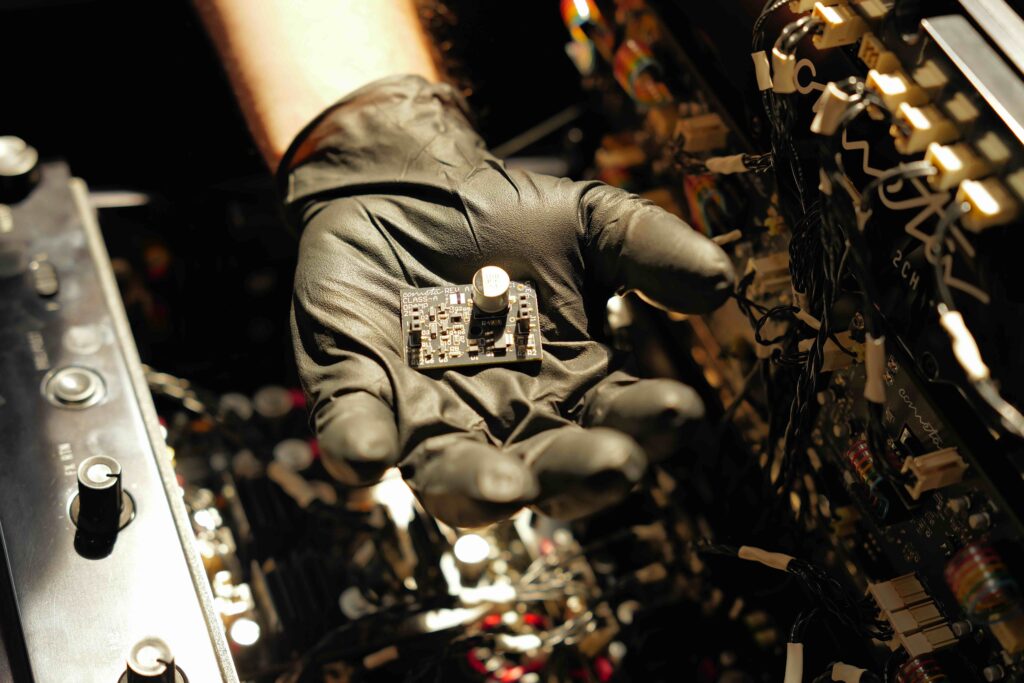
“Every circuit is designed specifically for this unit, and when you put all those things together, it allows your music to flow through as cleanly as possible from input to output with unprecedented audiophile performance.”
We don’t need to get too technical into it, but I was wondering if you could highlight any specific components and how they contributed to the sound of the Cometa M2?
L: As we took a look at the whole design, we’ve gone through a lot of redesigns, finding every single place where there are corners cut on other circuits, and then we eliminate that cut corner. For instance, the Cinemag Transformers are built right in Canoga Park. The Valley is the heart of Cometa’s origin, as many of the project’s participants are from there. After listening to many different transformers, the output transformers are what really added a lot of the sound to the M2. That is very near and dear to us. In addition to that, as I mentioned before, the discrete Op-amps from Barry Bialos are so important. The M2’s phono pre-amp is a 100% Class-A discrete circuitry. That’s our own proprietary design, and similarly with the line preamp. There are no off-the-shelf parts, summing amps, or op-amps. Every circuit is designed specifically for this unit, and when you put all those things together, it allows your music to flow through as cleanly as possible from input to output with unprecedented audiophile performance.
That really comes through after hearing the mixer on a number of different systems over the past year or so.
L: The other thing that I really like about the mixer is the EQ. Many DJs may be accustomed to traditional 3-band isolators on a rotary mixer, but the EQ on the M2 was selected for its musicality and subtlety. We envisioned the M2 as both an instrument and a component. The EQs are high and low shelving passive tone stacks inspired by Pultec EQs, renowned for their use in studios. They are straightforward, featuring only a few bands and levels of cut and boost. They’re beloved in studios because, in any configuration, you can get amazing sound out of them. With the Cometa’s EQ, you’re able to cut and boost in dramatic ways, but it will still sound musical and not overdrive or distort. I would say there are not very many rotary mixer EQs like our circuit, if any at all.
With the M2, you end up with this unbelievable headroom. So even when you’re pushing the signal, like when DJs are fully all the way up on the input trims or faders, you’re still not going to have much distortion, if any. There’s a level of headroom in the M2 that you don’t get in other mixers. With the E&S, Bozak, and other mixers, you start getting distortion pretty early on…
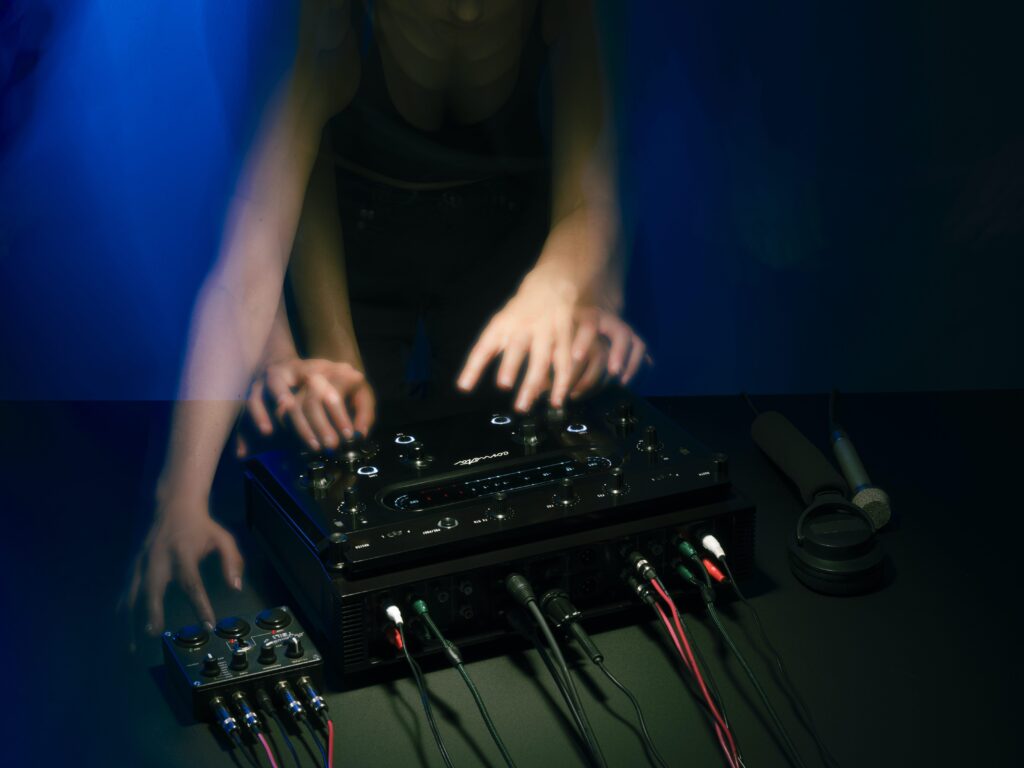
As DJs, you guys have been using the mixer for a while now in various situations. I’m curious have you found yourself mixing differently on the M2?
S: No. I can easily mix on the M2 as well as I can with my favorite mixer, the Allen & Heath Xone V6, which was the inspiration. If anything, the M2 has better detail. Everything you can see and touch on the mixer is entirely bespoke, including the VU meter, which is one of my favorite things that’s been part of this project. The detail of what you’re seeing from each channel is something that you don’t really get from other mixers. For example, the Xone V6 has seven or eight LED lights, which is sufficient, but I wanted more detail for the mix. That’s just good for the user, and if it’s suitable for the user, then it’s good for the audience, too.
L: The M2 VU employs a wild 362 LEDs in its proprietary meter, whereas most meters have in the tens or less. It’s a very high-resolution and very fast meter. I love the VU meter because you can see so much at a glance, which is great since the m2 was designed to have the intuition of an instrument in terms of playability. When we were developing the M2, we also brought on Tobias Brunner, an industrial designer from Switzerland, who took a very holistic approach to the whole design process. Instead of having a sheet metal box with knobs like all the other mixers, he considered what an instrument is, what a mixer is, and how people interact with music. There were hundreds of sketches done. We built numerous prototype shape models for people to try out and see what felt most ergonomic. There was even a design phase where we created a shadow box that obscured your view of your hands. You would put your hands in this box to see if you could play the mixer essentially blindfolded. That’s what we really wanted people to have when approaching this mixer. There’s a little bit of a learning curve, but in the end, it’s like it should be an extension of you and your hands and your ears.
S: There’s also a simplicity to the design that he made. It shouldn’t be so overwhelming. You can quickly show laymen how to use the M2. I mean, it’s not like there are four channels, each with 28 different adjustments. It’s really simplified. It’s easy to see, easy to explain, and easy to learn.
I’ve heard you guys also compare the M2 to a sports car?
S: When we were creating the first designs, I wanted to look at concept cars. There’s so much inspiration from things that never came out. A lot of the M2’s design came from this one particular concept car book from the ’70s, where I dog-eared a bunch of pages and sent them over to Tobias. The two of us came up with this gentle slope design, which I think is really good for a DJ. You don’t want something flat on a table. You want something that’s slightly elevated and aimed at you. The meter design came from the speedometer of one of those cars. Certain knobs were cut certain ways because it was important to be able to feel this thing, touch it, and know where you are and where your hands are, especially in some clubs where you can’t even see your hand in front of you. If your fingers are on it, you should know where north is or where the knob is pointing.
There have been a number of DJs around the world who have tested the mixer already. What’s been the reaction and some of the feedback you’ve gotten so far?
S: Well, the main thing is everybody wants a four-channel mixer. That application is beneficial in a club setting, but each of our products has its own specific application. For the two-channel, the perfect application is a jazz kissa or listening bar environment where records are being played and lightly mixed. The other application is home use with audiophile equipment. Mixers are becoming increasingly popular for people to have alongside their home hi-fi setups, especially with high-end gear.
L: What we’re trying to do is not only bring quality audiophile components to the club, but also bring the DJ experience home for people in their own listening rooms. We aimed to produce the purest quality of signal, drawing inspiration from the way David Mancuso would mix. He would switch between phono A and phono B on his Mark Levinson preamp because that was the least amount of equipment in his signal chain. That was our goal with this. The M2 definitely appeals to the home user who wants to entertain their guests on their high-end audiophile sound systems.
We’re going to be developing some other stuff that’s more DJ and club-focused. For the DJs who have used it, the first thing they say is, wow, because the signal that they’re hearing is something that they haven’t heard on a DJ mixer or on a DJ system before. Part of what makes me so proud to be a part of the project is that I can go into any listening room, club, or DJ booth, put this down and walk away and not say anything and let the unit speak for itself because the sound quality jumps out at people.
S: I don’t think that we’ve ever had anybody say that it sounds worse. It always sounds better. Even at the Living Room, which already has an amazing sound system, we dropped the M2 in there, and even the guys who worked there said it sounded amazing. It’s been the same story going over to Commonwave hi-fi and playing on their million-dollar Nagra system. We dropped the M2 in there, and it just sounds better. It’s something that I’m really excited about.
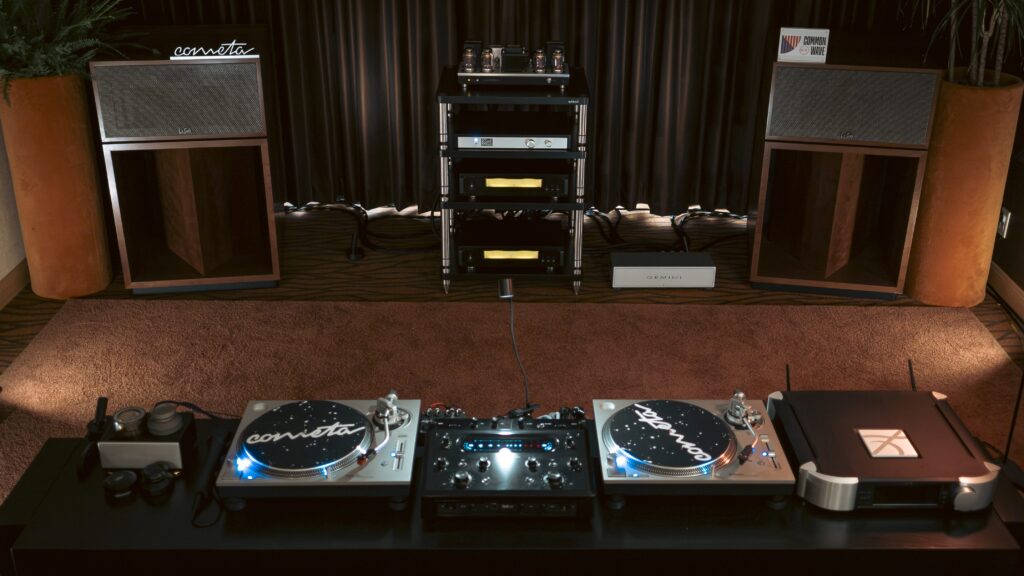
“By introducing DJ and rotary culture to the hi-fi community, you’re adding another layer of dimensionality to the process of listening, which becomes more tactile… guiding the meditation that you’re having in front of your speakers.”
On that note, you’ve also been bringing the M2 to hi-fi conventions? What has been the response from the hi-fi community?
L: We were initially nervous because those are some of the most critical ears on the planet. The systems in the next two rooms aren’t even running air conditioning in the middle of the summer because they don’t want the sound to be lessened in any way… Obviously, what we’re doing has one foot in the DJ world, and it may be seen as somewhat corrupting the approach to an audiophile purist. But they came into the room, and more than a half dozen times, we would hear people say that it was the best-sounding room at the Hi-Fi show.
I think part of it is because we’re geared towards big sound and having fun doing it. We were playing on the brand new Klipsch La Scala’s and tri-amped with Luxman and TEAC amplification. At Commonwave, we were on the brand new Klipschorns and tri-amped with Accuphase. So we’ve been putting M2 in front of six-figure amplification systems and speakers that cost $25,000 to $500,000, and they’ve been blowing people away. Wes (Common Wave HiFi) has a very critical ear, and he’s said that the M2 was a product I can get behind, which was incredible to hear.
S: The endorsement from the hi-fi community was not something we were expecting. We were expecting more criticism, but it feels good. Obviously, you’re not going to be accepted by everybody, but it’s been pretty glowing so far.
L: It’s been really cool to rub elbows with some of these brands that mean so much to us. We never thought we would be in the same breath as Dan D’Agustino, Klipsch, Nagra, or Shunyata Cables, Devore. We’re talking to all of these guys, the founders, engineers, and the people who work with these brands. They love what we’re doing because we’re bringing in a level of interaction, playability, and social listening that they feel is something that Hi-Fi and audiophile culture could use. In our room at the Hi-Fi Convention we brought in our sofa, decorated the room, and wanted people to come in, play, and just hang. At the end of the show, our room was full of young people who stayed past the closing time because they found a place where they felt comfortable, which is excellent.
Lastly, the press release includes this line: “In a climate of media noise and evaporating intention, our ultimate goal is to encourage a return to active, tactile, and heartfelt listening.” Can you speak to that on a personal level and what you feel is the overall mission of Cometa?
S: The Hi-Fi community can be very stuffy and old, but it’s starting to get more attention from young people who I think are caring more about sound and quality over loudness and noise. I really want to bridge the gap between DJ culture and the rotary mixer as a tool with the Class-A quality control, design, and engineering of hi-fi. I think we’re doing it one day at a time.
L: When I describe what the M2 is to the hi-fi community, I call it an active listening platform because when you’re sitting in the sweet spot with the M2, which is a very tactile instrument, you’re forced to touch the music and feel the sound that you’re putting through the system. You’re encouraged to start loving the process of selecting music, which becomes this next level of immersion into the whole process of listening that you just don’t get from passive listening. It’s a completely different exercise and experience. I think by introducing DJ selector and rotary culture to the hi-fi community, you’re adding another layer of dimensionality to the process of listening, which becomes more tactile, being a selector and guiding the meditation that you’re having in front of your speakers.
So it’s a really cool thing to share with people. When we started this conversation about rotary culture and what makes rotary mixers special, the difference between a fader and a knob isn’t really that big. Still, the engagement of the user and how people interact with the music make all the difference in the world. I think that’s what the M2 is doing.
S: I feel like it’s harkening back to why I even wanted to be a DJ in the first place, which was to share music. I feel like the difference between DJ culture and hi-fi culture is that with DJ culture, you’re listening to music, and with hi-fi culture, you’re often listening to systems. I really just want to marry the two together. I want to bring the sharing aspect of DJ-ing to hi-fi culture.
The Cometa M2 is now available for pre-order.
Visit Cometa’s website for more information: https://cometa.inc/




